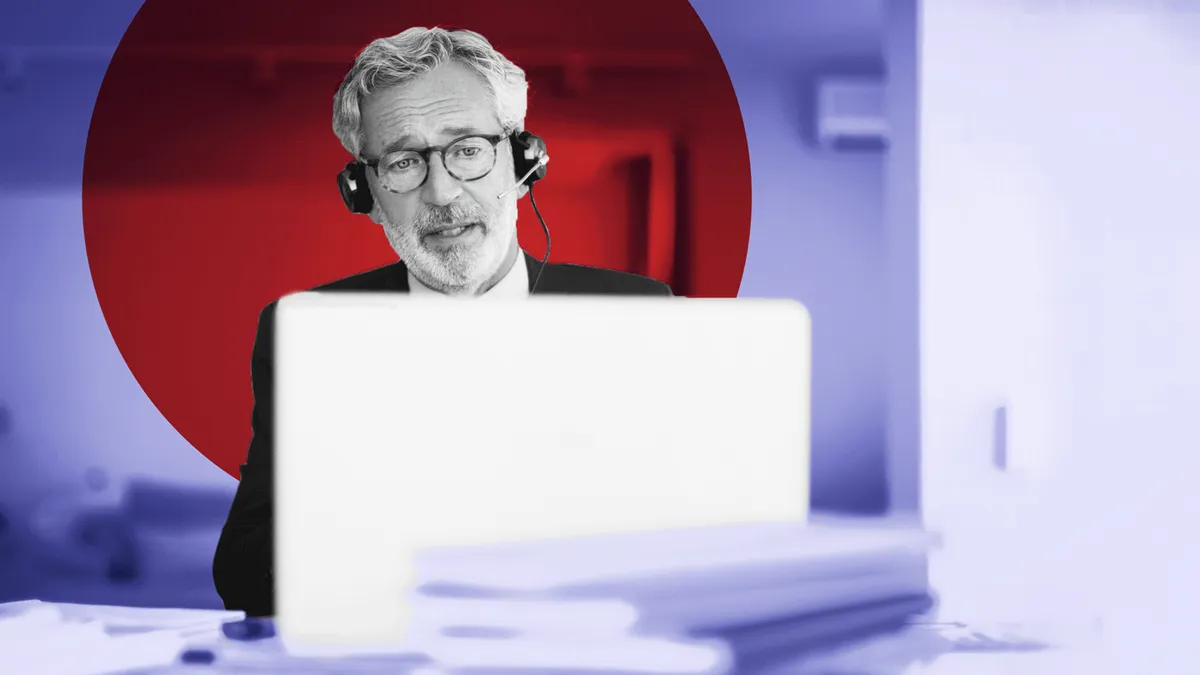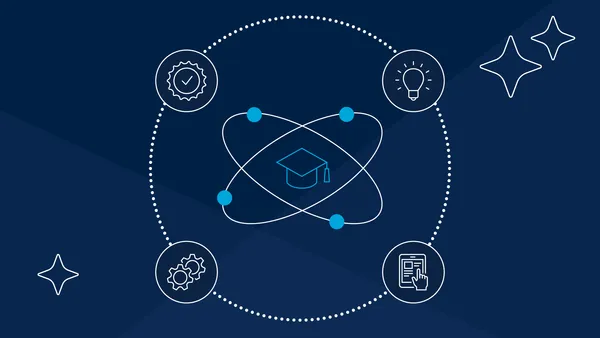Editor's note: This article is part of a package of stories examining the impact of COVID-19 on the business of online learning for colleges. Read more here.
American higher education's unexpected and rapid transition online this spring didn't just capsize traditional undergraduate studies.
Postsecondary programs that haven't historically had much of an online component — such as law and medicine — were also forced to flip, halting typical practices in disciplines often resistant, or unable, to change.
These programs usually need to conduct much of the coursework face-to-face, as students must hone real-world skills, such as being in a courtroom or a hospital. Frequently, state regulators, accreditors and other oversight entities mandate that only a certain amount of the learning be digital.
While many programs have reverted to some level of in-person instruction for the fall, online elements linger and may inform how education in fields like law and medicine are offered down the road. Officials who run them see an opportunity to adapt to a permanently changed world.
"It's slowly going to force the academy to change," said John Miller, vice president for enrollment management, marketing and communications at Vermont Law School. "What the pandemic will show us is that post-COVID, you will see much more acceptance of online education."
New twists online
The rapid shift online gave instructors who had never even dabbled in the platform a crash course. For law professors, in particular, this might have been their first time teaching digitally, like at University of California, Berkeley's law school, where courses in the primary Juris Doctor (J.D.) degree were never virtual, said Molly Shaffer Van Houweling, the institution's associate dean of J.D. curriculum and teaching.
The shift involved a heavy lift by instructional technology staff, who helped faculty learn how to sign into Zoom and put new materials into the university's learning management system, Shaffer Van Houweling said. She hosted online meetings with her colleagues, billed as happy hours, to teach them Zoom functionality, which helped prepare them for an entirely virtual fall.
There were costs for the transition online, including helping students and instructors adapt to new technology, Shaffer Van Houweling said, though she did not provide exact amounts.
Much more difficult to translate than lectures were clinical scenarios that students in programs such as nursing and veterinary medicine must undergo to complete their degrees. These involve working in either campus labs or real-world settings.
Some of that training was doable over webcam.
Students at Texas A&M University's College of Veterinary Medicine & Biomedical Sciences frequently use animal models to replicate surgeries and other procedures, said Karen Cornell, the associate dean for professional programs. During a six-week period this spring, the university sent students pieces of models to use for practicing surgical techniques at home. The veterinary students had to recreate a sterile environment for a surgery in someplace like their kitchen before beginning their work, while an instructor watched and guided them remotely via videoconferencing software.
The program also used Zoom to simulate interactions with clients. Using the software's breakout rooms feature, students would work with actors hired to pose as pet owners to diagnose problems, a process akin to telehealth, Cornell said.
Meanwhile, the University of California, Davis' veterinary program usually has students work out of an animal hospital, where they interact in a clinical setting and view medical procedures, said Joie Watson, associate dean of the School of Veterinary Medicine. When the virus prevented students from visiting the hospital, they observed instead through a smartphone strapped somewhere in the room or to a doctor, she said.
But clinical experiences can be entirely virtual. At Indian River State College, in Florida, nursing students also typically spend time working in a hospital. But in light of COVID-19, students instead logged onto an online platform to receive a fake patient assignment and navigate with an avatar to treat the individual, said Patty Gagliano, assistant dean of nursing. The software was purchased pre-pandemic but will be relied on more, Gagliano said. Hands-on clinical experience is the most valuable for students, she added, but simulations, whether virtual or in a lab, help students build critical thinking and communication skills and increase patient safety. Gagliano declined to say how much the simulations cost.
"The students were pleased, they were … able to have a really rich learning environment that would stimulate critical thinking and that nursing judgment," she said.
What could change after COVID-19?
Online formats likely won't overtake professional programs. For one, industry-specific oversight groups set limits on the share of instruction that can be delivered virtually. When the pandemic began, the American Bar Association loosened its rules. Although a trio of academics interviewed for this piece say it's unlikely that flexibility will extend post-coronavirus, the ABA started testing almost fully online J.D. programs prior to this year. The ABA did not respond to requests for comment.
One of those programs is at the University of Dayton, in Ohio, and launched in August 2019. The institution had already developed robust asynchronous teaching material for its hybrid program, easing the abrupt transition to entirely virtual coursework in the spring, said Andrew Strauss, dean of the School of Law.
Though students in the residential program weren't all keen on the change, Strauss said the shift to online instruction was successful. At institutions across the country, online programming could help engage students who are typically lost in the massive, early-year classes, he said.
As a downside, faculty missed out on other academic work while they were navigating the transition online, Strauss said. But the university also brought in a handful of new instructors to help teach virtual courses
"It's definitely all changing rapidly," he said.
"It's slowly going to force the academy to change. What the pandemic will show us is that post-COVID, you will see much more acceptance of online education."

John Miller
Vice president for enrollment management, marketing and communications, Vermont Law School
Each state varies in their online education regulations for nursing programs, said Donna Meyer, CEO of the Organization for Associate Degree Nursing. Meyer said anecdotally that nursing programs are working with their respective states for more permanent changes in rules, but nothing has been decided yet.
Digital learning also can't completely replicate some of the benefits of face-to-face instruction, officials say. For law, that might be learning how to negotiate and read body language, which is hard to pick up over video calls, Shaffer Van Houweling said. Law students also tend to learn how to address juries and judges in-person, using a mock courtroom, she said.
Yet there are benefits for law students who want to pursue online credentials, which have increased in popularity in recent years. At the Vermont Law School, online offerings helped draw students from other programs to take summer classes in specialty topics such as environmental law, Miller said. He envisions this becoming a regular practice that could even allow students from other colleges to earn online certificates through the school.
Virtual lessons could also ease the stress of clinical experiences. UC Davis' veterinary students were able to split their time between the fast-paced hospital setting, which can prove stressful, and home, where they can learn some of the same concepts, Watson said. It's a practice that may continue, and doesn't require rule changes, she added.
"We want them to learn the busy parts, but we also can have them connected to the clinical environment in an online way," she said.






















